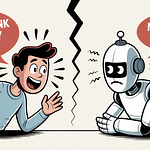Title: Attention Is All You Need
Authors: Ashish Vaswani, Noam Shazeer, Niki Parmar, Jakob Uszkoreit, Llion Jones, Aidan N. Gomez, Łukasz Kaiser, and Illia Polosukhin
Published: June 2017 (arXiv preprint.) The paper was also published at NeurIPS (Neural Information Processing Systems) in December 2017.
In 2017, a team at Google Brain released a paper that would completely reshape the field of deep learning. Titled Attention Is All You Need, it introduced the Transformer architecture—a bold departure from the dominant models of the time, like LSTMs and GRUs.
The radical idea? Ditch recurrence entirely. Instead, use a mechanism called self-attention to weigh the importance of different words in a sequence—all at once.
This meant faster training, parallel processing, and the ability to model long-range dependencies without the memory bottlenecks of older models. Transformers could scale up—and up—and up.
Today’s large language models, including GPT-4, are direct descendants of this paper.
🧠 Why It Still Matters
🚀 Introduced the Transformer—now the foundation of most modern AI models
🧱 Enabled massively parallel training and long-range context modeling
📈 Sparked the scaling revolution behind models like BERT, GPT, PaLM, and more
🔗 Read the Original Paper
Attention Is All You Need (2017)
🌟 Fun Fact
In March 2024, all eight original authors of Attention Is All You Need reunited for the first time—live on stage at NVIDIA GTC. It was a historic moment, bringing together the team that launched the transformer era to reflect on how far the field has come.
As @NEARProtocol put it on X:
“Mom, we’re getting the gang back together.”
Yes, that includes Illia Polosukhin—now co-founder of NEAR Protocol.
📺 Watch the GTC Panel Replay here:
🗣 Let’s Keep Reading
Stay tuned for tomorrow’s paper:
LSTMs — The Original Memory Hack.
(You’ll never forget it. And neither will the model.)
📚 Quick Vocab: Day 1
Transformer: A neural network architecture that uses self-attention to process input data in parallel.
Self-Attention: A mechanism that lets the model weigh the importance of different input tokens relative to each other.
Encoder/Decoder: Two components of the original transformer architecture—one encodes input, the other generates output.
#Transformers #TheWolfReadsAI #DeepLearning #MachineLearning #AIResearch #NeuralNetworks #AttentionIsAllYouNeed #LLM #AIHistory #AIExplained #AshishVaswani #NoamShazeer #NikiParmar #JakobUszkoreit #LlionJones #AidanNGomez # ŁukaszKaiser #IlliaPolosukhin #nvidiaGTC #jensenhuang #transformingAI















Share this post